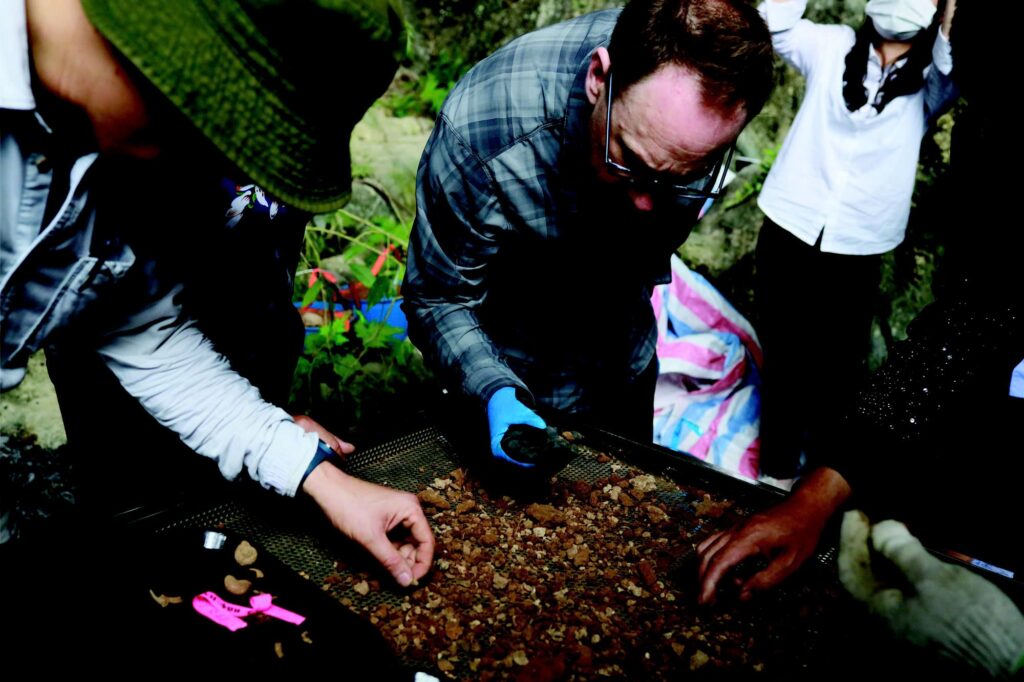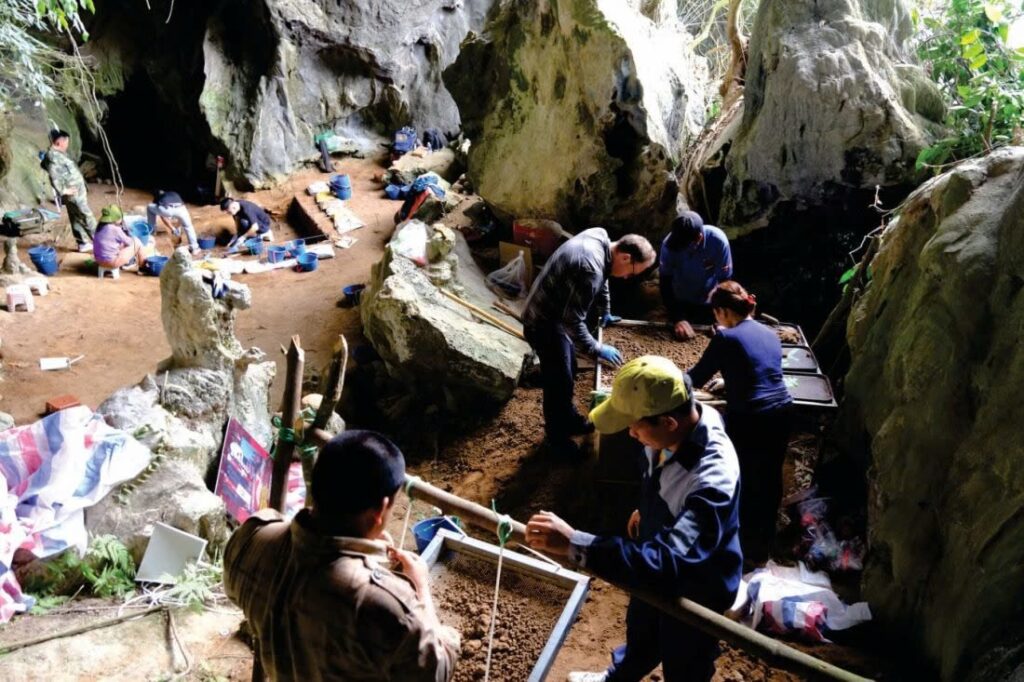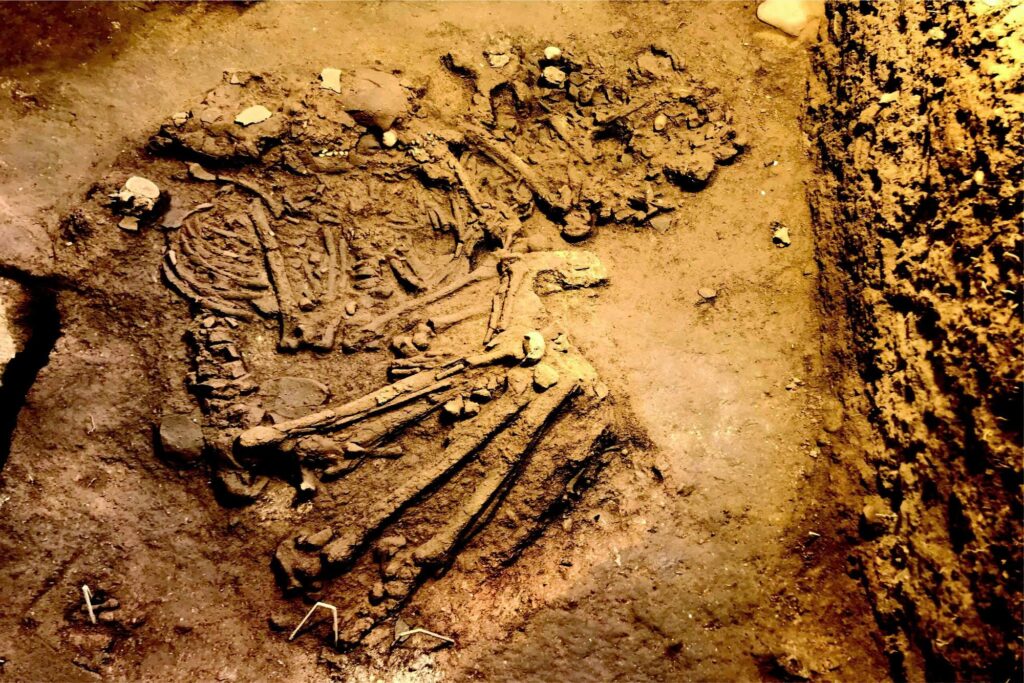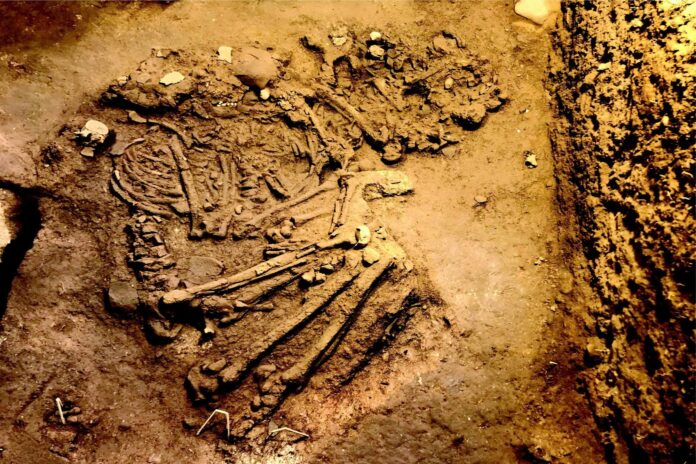10,000-Year-Old Skeletal Remains Reveal Prehistoric Life in Northern Vietnam

In a groundbreaking archaeological discovery, the oldest human remains ever found in Vietnam have been unearthed in Ha Nam Province, northern Vietnam. Dating back an astonishing 10,000 years, these skeletal remains offer a fascinating glimpse into the lives of our ancient ancestors.
A Kneeling Burial: Unique Insights into Prehistoric Funeral Practices
The Vietnam Institute of Archaeology’s excavation at the Tam Chuc Pagoda Complex in Kim Bang District yielded three graves containing both children and adults. Intriguingly, the bodies were buried in a kneeling position, providing valuable insights into the funeral practices of prehistoric communities in the region.
Stone Tools and Animal Remains: Clues to Ancient Lifestyles

Alongside the human remains, archaeologists uncovered a treasure trove of artifacts that paint a vivid picture of prehistoric life. Small stone tools, characteristic of the Hoa Binh culture dating back 15,000 years, were found at the site. The discovery of mollusk shells and teeth bones of small animals suggests these may have been important food sources for the ancient inhabitants.
A Timeline Spanning Millennia: From Pleistocene to Holocene

The excavation in Kim Bang District revealed a rich tapestry of history, with relics spanning from the late Pleistocene to the late Holocene era, approximately 10,000 to 12,000 years ago. This extensive timeline offers archaeologists a unique opportunity to study the evolution of human culture in the region over thousands of years.
Cultural Connections: From Hoa Binh to Dong Son

The findings at the site provide evidence of cultural continuity and change. While the stone tools are attributed to the ancient Hoa Binh culture, other discoveries, such as reddish-brown rope pottery fragments, are linked to the later Dong Son culture, which flourished in northern Vietnam from 1000 BC to the first century AD.
A New Chapter in Vietnam’s Prehistoric Narrative

This remarkable discovery not only pushes back the timeline of human habitation in Vietnam but also offers invaluable insights into the lives, practices, and cultural developments of our ancient ancestors. As researchers continue to study these findings, we can expect to uncover even more fascinating details about Vietnam’s rich prehistoric past.

